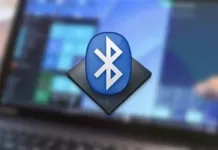Higher speeds, wider bandwidths, and lower latencies are benefits of the 5G Internet of Things (IoT). The Internet of Things refers to a network of interconnected devices.
In this system, devices have an ID and can transmit and receive data. The devices can also exchange information without direct human interaction. IoT is applicable in many spheres, from smart homes to precision farming.
In 2023, the devices connected to the Internet of Things (IoT) are expected to grow from 700 million to over 3 billion. With such a rise in numbers, wireless cellular internet networks need to be expanded.
While many factors have led to the rise, the development of the fifth generation, or 5G, will have a significant impact on the IoT market. The primary reason for this is that 5G networks will substantially boost the performance and reliability of connected devices.
What is IoT in 5g technology?
5g network IoT stands for the 5th generation of mobile networks. It has higher speeds, lower latency, wider bandwidths, and more advanced capabilities than its predecessors. The network can support a huge increase in connected devices and enable new applications, such as augmented reality and virtual reality. 5G networks have improved high-speed Internet connectivity around the globe and are enabling a revolution in the Internet of Things (IoT).
With the Internet of Things growing over the last few years, existing infrastructure is being developed to cope with the predicted growth in connected devices and data transfer. Mobile Network Operators launched 5G networks in 2019, and it is projected to become the primary cellular network by 2025. In addition to billions of IoT devices, 5G networks will allow for even more devices to operate in close range without interfering with each other.
In the meantime, 4G LTE networks will remain viable for a long time. But for consumers and IoT manufacturers alike, it is important to understand what makes this technology unique and how it will impact the future of cellular connectivity.
What is the 5G impact of the Internet of Things?
There are multiple ways 5G wireless cellular internet is shaping the future of the Internet of Things. At the same time, enabling the IoT network to handle an increasing number of connected devices. However, there are a few aspects of IoT that 5G technologies are striving to improve, and these include:
Size: With more and more devices becoming connected and more applications being created, the Internet of Things continues to grow. Having 5G networks transmit data faster would allow more devices to “talk” to one another and connect to the network. High latency or responsiveness has always been a concern for companies with an array of connected devices. However, by adopting 5G technologies, companies can add many more devices without overcrowding their networks and prolonging their wait times.
Power Consumption: Individuals and companies looking to connect multiple devices to a network may also be concerned about power consumption. A recent innovation called Narrowband IoT lowers data rates and narrows bandwidth. Using this technology could reduce power consumption and bandwidth usage significantly. The ability to scale is crucial for many commercial and industrial operations, and 5G will make this possible.
Data: 5G’s most obvious impact on the Internet of Things is its ability to share much more data more quickly than LTE or 4G. With 5G, you can receive and transmit more data by using advanced wireless communication methods such as MIMO (multiple input, multiple outputs). MIMO uses multiple antennas at both the destination and the source. Having multiple transmitters and receivers spread over a larger distance is better than having a single antenna spread out further apart.
Read Also:
5g IoT use cases and 5G Technology
5G has several advantages over other systems. One of them is the ability of 5G to support a variety of stationary and mobile IoT devices. 5G provides varying speeds, bandwidths, and quality of service requirements. Businesses will need 5G’s versatility as the Internet of Things expands. 5G will support essential communications and will have much stricter efficiency standards.
Higher Data-Transfer Speeds
For the IoT market, 5G is great news. The reason for this is that 5G offers faster, more reliable, and more secure connections across almost all aspects of our lives.
With 5G technology, these connected devices will be able to run faster and more reliably. Consequently, smart devices, such as smartphones, smart lights, and smart homes, can communicate and share data more easily.
Control More 5g IoT Devices Remotely
5G technology will enable people to control more devices remotely, especially in areas requiring real-time network performance. Heavy machinery in dangerous environments can be controlled remotely, improving worker safety and remote operation. For instance, often, equipment requires more than one sensor, which is a data-gathering device, to cover failure modes. However, gateways are more complicated and allow remote tuning and reverse connectivity. Companies, like Yalantis, can provide solutions for connecting cloud applications for monitoring and remote control.
Stable connections and greater network reliability
In addition to offering faster speeds, 5G technology is more reliable, thus providing faster connections. This is essential for devices that require real-time updates, such as security cameras, locks, and other monitoring devices. With its greater reliability, low latency, high-speed connectivity, and wide coverage, 5G is set to revolutionize the IoT industry.
Supply Chains
Supply chain integration reduces costs, improves customer service, reduces inventory failure in transit, and enhances the process overall.
With the implementation of IoT devices, factories, and warehouses can now monitor goods, components, and equipment in real time. With 5G, products can be monitored from production to end-user in real time. 5G can do this automatically, and sellers can be notified when products are shipped or missing.
Self-Driving
With IoT, 5G enables vehicles to communicate with each other and with their surroundings. This reduces the risk of collisions and makes traffic patterns much more reliable. Combining these two factors will reduce traffic jams, shorten travel times, and conserve electricity. Additionally, vehicles could monitor the state of their brakes or oil, alerting drivers and directing them to the nearest repair shop. Furthermore, self-driving cars could collect data and send it to their suppliers so they can refine their designs.
Conclusion
Every day, we learn more and more about how 5G networks can affect IoT. We also learn how they form the foundation for the age of digitalization, Big Data, and AI. With our world becoming more and more connected, we cannot predict how much we will rely on the Internet of things in the future. However, both 5G and IoT technologies are shaping the way we live as consumers, managers, employees, and business owners.















































